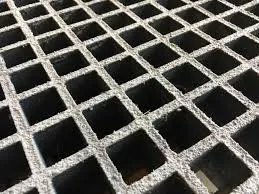
-
 Afrikaans
Afrikaans -
 Albanian
Albanian -
 Amharic
Amharic -
 Arabic
Arabic -
 Armenian
Armenian -
 Azerbaijani
Azerbaijani -
 Basque
Basque -
 Belarusian
Belarusian -
 Bengali
Bengali -
 Bosnian
Bosnian -
 Bulgarian
Bulgarian -
 Catalan
Catalan -
 Cebuano
Cebuano -
 China
China -
 China (Taiwan)
China (Taiwan) -
 Corsican
Corsican -
 Croatian
Croatian -
 Czech
Czech -
 Danish
Danish -
 Dutch
Dutch -
 English
English -
 Esperanto
Esperanto -
 Estonian
Estonian -
 Finnish
Finnish -
 French
French -
 Frisian
Frisian -
 Galician
Galician -
 Georgian
Georgian -
 German
German -
 Greek
Greek -
 Gujarati
Gujarati -
 Haitian Creole
Haitian Creole -
 hausa
hausa -
 hawaiian
hawaiian -
 Hebrew
Hebrew -
 Hindi
Hindi -
 Miao
Miao -
 Hungarian
Hungarian -
 Icelandic
Icelandic -
 igbo
igbo -
 Indonesian
Indonesian -
 irish
irish -
 Italian
Italian -
 Japanese
Japanese -
 Javanese
Javanese -
 Kannada
Kannada -
 kazakh
kazakh -
 Khmer
Khmer -
 Rwandese
Rwandese -
 Korean
Korean -
 Kurdish
Kurdish -
 Kyrgyz
Kyrgyz -
 Lao
Lao -
 Latin
Latin -
 Latvian
Latvian -
 Lithuanian
Lithuanian -
 Luxembourgish
Luxembourgish -
 Macedonian
Macedonian -
 Malgashi
Malgashi -
 Malay
Malay -
 Malayalam
Malayalam -
 Maltese
Maltese -
 Maori
Maori -
 Marathi
Marathi -
 Mongolian
Mongolian -
 Myanmar
Myanmar -
 Nepali
Nepali -
 Norwegian
Norwegian -
 Norwegian
Norwegian -
 Occitan
Occitan -
 Pashto
Pashto -
 Persian
Persian -
 Polish
Polish -
 Portuguese
Portuguese -
 Punjabi
Punjabi -
 Romanian
Romanian -
 Russian
Russian -
 Samoan
Samoan -
 Scottish Gaelic
Scottish Gaelic -
 Serbian
Serbian -
 Sesotho
Sesotho -
 Shona
Shona -
 Sindhi
Sindhi -
 Sinhala
Sinhala -
 Slovak
Slovak -
 Slovenian
Slovenian -
 Somali
Somali -
 Spanish
Spanish -
 Sundanese
Sundanese -
 Swahili
Swahili -
 Swedish
Swedish -
 Tagalog
Tagalog -
 Tajik
Tajik -
 Tamil
Tamil -
 Tatar
Tatar -
 Telugu
Telugu -
 Thai
Thai -
 Turkish
Turkish -
 Turkmen
Turkmen -
 Ukrainian
Ukrainian -
 Urdu
Urdu -
 Uighur
Uighur -
 Uzbek
Uzbek -
 Vietnamese
Vietnamese -
 Welsh
Welsh -
 Bantu
Bantu -
 Yiddish
Yiddish -
 Yoruba
Yoruba -
 Zulu
Zulu
grp duct
Understanding GRP Duct Advantages and Applications
Glass Reinforced Plastic (GRP) duct systems have emerged as a popular choice in various industries, particularly in construction and HVAC (Heating, Ventilation, and Air Conditioning) applications. This innovative material combines the lightweight properties of plastic with the strength and durability of glass fibers, making GRP duct an ideal solution for a multitude of applications.
One of the most significant advantages of GRP duct systems is their excellent resistance to corrosion and chemical damage. Traditional duct materials like metal often suffer from rust and deterioration when exposed to moisture or corrosive substances, leading to reduced efficiency and the need for regular maintenance. In contrast, GRP duct is inherently resistant to chemicals, making it suitable for environments such as wastewater treatment plants, chemical processing facilities, and other industrial settings.
.
Another important feature of GRP duct is its thermal insulation properties. GRP effectively minimizes heat loss or gain, making it an energy-efficient choice for HVAC applications. By maintaining stable temperatures within air ducts, GRP systems can contribute to significant energy savings and improved system performance. This characteristic is particularly beneficial in environments where maintaining specific temperature ranges is critical.
grp duct

Furthermore, GRP ducts offer excellent airflow characteristics. The smooth interior surfaces of GRP ductwork facilitate unobstructed airflow, reducing resistance and improving overall efficiency in systems. This is vital for HVAC applications where efficient air distribution is necessary for maintaining comfort and air quality within buildings.
In terms of longevity, GRP ducts have impressive service life, often outlasting traditional duct materials. Their resistance to environmental factors means they require less maintenance and replacement over time, resulting in lower lifetime costs. This durability is a key factor for industries looking to reduce operational costs and enhance sustainability.
The applications of GRP duct systems are extensive; they are commonly used in industrial, commercial, and residential sectors. With the increasing demand for sustainable and efficient building practices, GRP ducts are poised to play a significant role in the future of HVAC and ventilation systems.
In conclusion, GRP duct systems offer a compelling alternative to traditional duct materials. With their corrosion resistance, lightweight properties, superior thermal insulation, and efficiency, they provide significant advantages for various applications. As industries continue to prioritize sustainability and efficiency, the adoption of GRP ducts is likely to rise, making them a vital component in modern infrastructure.
Latest news
-
Exploring the Benefits of Top Hammer Drifter Rods for Enhanced Drilling PerformanceNewsJun.10,2025
-
High-Precision Fiberglass Winding Machine for GRP/FRP Pipe Production – Reliable & Efficient SolutionsNewsJun.10,2025
-
FRP Pipes & Fittings for Shipbuilding - Corrosion-Resistant & LightweightNewsJun.09,2025
-
Premium FRP Flooring Solutions Durable & Slip-ResistantNewsJun.09,2025
-
Premium Fiberglass Rectangular Tanks Durable & Lightweight SolutionNewsJun.09,2025
-
Tapered Drill String Design Guide Durable Performance & UsesNewsJun.09,2025









